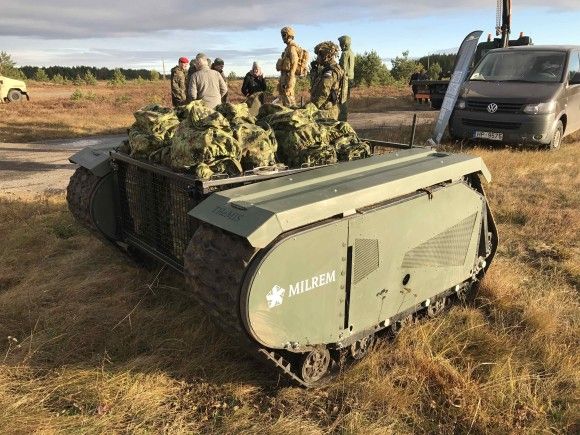Thales InnovDays 2017: Multi-Role Spacecraft with a Polish Gripper
During the Thales InnovDays 2017 event in Paris, the French company has showcased a concept of a multi-role spacecraft which would be capable of placing the satellites in the target orbits and refuelling the spacecraft already present in the outer space. Moreover, the proposed design would also be tasked with execution of maintenance/servicing and de-orbiting missions. A robotic gripper, designed by the PIAP (Polish Industrial Research Institute for Automation and Measurements) facility, remains one of the elements that was tested within the framework of this project.
Thales Alenia Space is working on creating a multi-role spacecraft which would utilize the most innovative solutions available on the market. Here, the main objective is to create a fully electric, high power drive, along with a set of very thin solar panels. Both these solutions make it possible to diminish the mass of the space craft, which would consequently translate into a significant reduction of launch costs.
Space Transport Bus is destined to be used to transfer the satellites to their target orbits, which is yet another element, the objective of which is to delimit the cost of orbital flights. Considering the aforesaid assumption, the launch vehicle would transport the Thales’s space craft with a satellite solely to a relatively low orbit, from where it would be then transported to the target location, e.g. a geostationary orbit, with the use of the electric drive of the auxiliary unit. Moreover, the craft could also be used to carry spacecraft that then would be destined to be used as probes, for exploration of the Solar System.
The Thales engineering team also sees numerous other applications for the craft designed, including some that have never been implemented globally so far. Here, satellite refuelling, as well as space maintenance and servicing of satellites, constitute the main fields of use for the new system. The craft could also be used to deorbit the redundant objects and to get rid of so called “space debris”. What is even more important, the concept assumes that several missions would be carried out in a single launch. A typical mission plan may include delivering a satellite weighing 10 tonnes to the geostationary orbit, then carrying out a maintenance mission, to finish with deorbiting of the redundant systems which stay in the outer space. Space Transport Bus is to be capable of staying in the outer space for up to 15 years.
The first craft stands a chance to be sent into the orbit in 2020, whereas commercial operators of satellites may be included in the group of potential customers, along with space agencies such as ESA, interested in counteracting the plague of space debris and conducting further space exploration.
It is worth to note the fact that the Polish Industrial Research Institute for Automation and Measurements (PIAP) is also involved in the programme, delivering a special purpose robotic gripper which could be applied within the new Thales’s craft, for the purpose of catching the satellites in the orbit, e.g. during the deorbiting missions. The Polish component has been created within the framework of preparing the ESA’s e.Deorbit initiative, the main objective of which is to deorbit the heaviest satellite ever placed in the outer space – the Envisat platform, with its weight at eight tonnes.




